To those whom we owe our flag …
The Liberation War of Bangladesh was fought by people from all walks of life, and artists and cultural activists were often at the heart of it. While some of them provided moral and medical support at refugee camps and hospitals, others went on to the heart of the battle, and it was every single piece of those countless contributions over nine months of blood, sweat and tears that culminated in the Independence of Bangladesh. On the 43rd anniversary of Bangladesh's emergence on the map, Star Arts & Entertainment looks back at the valiant contributions of some of the most respected artistes and creative minds of our country.
Mustafa Monowar, artist-puppeteer
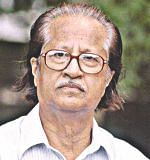
The scenes from the refugee camps in West Bengal in 1971 are indelibly printed in puppeteer-artist-director Mustafa Monowar's mind: Grim, distressed faces and a deathly silence which enveloped everyone, including the children. “They were getting basic necessities such as food and clothes but laughter, which is crucial for human beings, was missing. So I thought I would have puppet plays to boost the refugees' morale and bring back laughter in their lives,” said Monowar. And he did do that through his puppet plays, such as “Agachha”, “Rakkhosh” and “A brave farmer”. Young and old alike joined in mirth fuelled by the satire, and Monowar was moved to tears at the response. One old man in the refugee camp said it was the first time that he had laughed after a month.
Ahmed Imtiaz Bulbul, composer

Soon after the Liberation War broke out, Ahmed Imtiaz Bulbul joined the guerrillas. Initially he participated in guerilla operations in Dhaka, and later he joined Sector 2. He was arrested twice by the Pakistani army during the war. While reconnoitering the Comilla-Brahmanbaria road under Sector 2, Bulbul and his comrades were arrested by the Pakistan army. They were taken to the firing squad, but the army changed their mind and took them to the interrogation cell instead. “But one day in late November, the soldiers killed everyone except the four of us, hoping to extract information. The following day we broke out from the jail,” he recalled. He was arrested again in Dhaka, and was tortured brutally. “An army truck used to come every evening to take 15 freedom fighters away, never to be heard from again. We used to sing gono sangeet to keep our spirits up. There were only a few of us left alive when the joint forces carried out an air raid, and freed us,” Bulbul said.
Azam Khan, singer
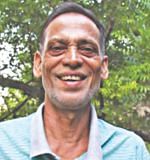
“When I asked my father for permission to join the war, he just asked me not to return without victory,” iconic pop musician Azam Khan said. He was assigned to carry out guerilla operations, as a section commander under Sector 2. 'Operation Titas', to destroy gas pipelines of Dhaka, led by Azam is considered one of the most successful guerrilla operations. “According to the plan me and my teammates went to Surulia in Demra where the gas pipeline of Titas entered the city,” said the legendary rock star. The team carried explosives by two boats, and blew up the entire pipeline. “The explosion was so big that the night sky of Dhaka brightened, intimidating the Pakistan Army,” he said. After a boat sank on the way back, Azam and others crossed more than one and a half kilometers swimming. Azam passed out after swimming such a long way, and only regained consciousness the next day.
Minu Haque, dancer-choreographer
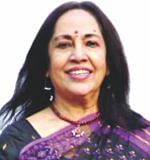
During the Liberation War, the Pakistani army wanted me to perform at the Governor's House (now Bangabhaban), but I declined and went to India with freedom fighters,” said dancer-choreographer Minu Haque. She then recalled her arduous journey: “We stopped at Bishramganj, Agartala of India where Bangladesh Field Hospital (the first field hospital during the war) was providing medical treatments to the wounded freedom fighters and refugees. It was a 480-bed hospital with both surgical and medical units. It was run by Bangladeshi doctors, medical students and volunteers. I worked there as a nurse and assisted doctors. Wounded Freedom Fighters from Sector 2 came to the hospital for treatment.” The hospital was operational from July to December, and was supported by the Bangladesh Government in exile, the Indian Government and several others nations.
Shaheen Samad, singer
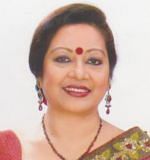
Noted artiste Shaheen Samad vividly remembers the turbulent days in 1971; on a truck with fellow members of Bangladesh Mukti Sangrami Shilpi Goshthi -- Lubna Mariam, Naila Zaman, Bipul Bhattacharjee, Mahmudur Rahman Benu, Dalia Nausheen, Debu Chowdhury and others – she went from camp to camp, singing to refugees and freedom fighters to boost their morale (featured in the documentary “Muktir Gaan”, directed by Tareque Masud and Catherine Masud). According to Shaheen, “We used to sing the Tagore song 'Oi pohailo timir raati', Nazrul song 'Karar oi louho kapat', Mushad Ali's 'Shonen shonen bhaishob', 'Barricade bayonet berajaal'), 'Jago jago', 'Bisham doirar dheu' and many more. “This was our contribution to the war. The sight of freedom fighters being moved to tears while listening to these songs is something I'll never forget,” said the artiste.

 For all latest news, follow The Daily Star's Google News channel.
For all latest news, follow The Daily Star's Google News channel. 


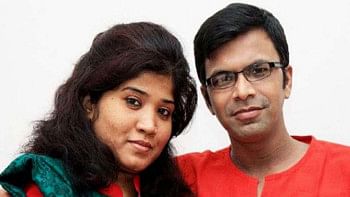
Comments